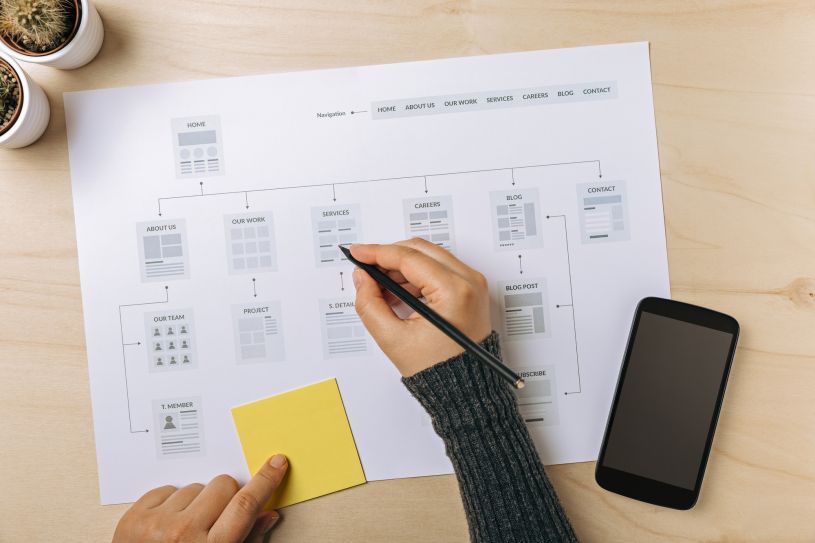Designing and developing a website works best when the developer steers clear of the one-size-fits-all approach. After all, every website is different. That said, there are generally 6 phases that make up every web development process (including ours). Here they are:
1. Exploration and Knowledge Gathering
Every web design and development project should begin with a knowledge gathering phase during which both you and the developer get to know each other, define the scope of the project, and set goals. Usually, this begins with a 15-30 minute call during which the basics are discussed and a longer meeting scheduled for a formal exploration of the project. During the exploration meeting, the two parties can flesh out goals, discuss design direction in-depth, and clarify any vague concepts. After all these, your developer should be able to produce a detailed proposal and project timeline.
2. Kickoff Meeting
After the preliminary knowledge phase comes to the planning phase, which ensures that projects begin on the right track. This usually takes place in person and your developer might suggest either their office or yours as a venue. During this meeting, expect to hear your developer reveal their plans for the project, top-level objectives, suggest milestones, assign homework, and also submit their process for review.
3. Content Creation and Organization
A process that outsiders hardly ever associate with web design and development is content creation and organization. But make no mistake, creating, organizing, and collecting your website’s assets is a valuable part of the web design and development process. By content assets, we mean text, videos, photos, testimonials, graphics, charts, graphs—anything that you might want to present to the world on your website because it enhances the quality of the information and experience that you want your audience to have. Your web developer will most likely have a content specialist on staff to assist with this process, and provide other services like content strategy, copywriting, and asset management.

4. Website Design
Next comes the design stage; where your web designer combines information gotten from your sitemap, sketches, and a questionnaire to create multiple design concepts and directions for you to review and choose from. At this stage, expect a lot of back and forth as your developer seeks feedback on the direction the project is taking. It’s a really organic, hands-on process, one which is sure to be eye-opening.
5. Website Development
Once you approve the web site's design, things will start getting really technical. Your developer will start programming the website and implementing all the functionalities that you agreed on in the design stage (think blog, CMS, shopping cart, photo gallery, etc.) It is standard procedure to receive a “private link” to your developing website during this stage that will allow you to monitor progress as things come along. You can watch as your website comes together and things build-up towards the launch.
6. Website Launch
Your developer will no doubt carry out some final tests to ensure everything about your website is in working order before you launching the site. Only after everything gets the green light will they launch the website and hand over the keys.
We take pride in this framework because it allows us to put you the client at the center of things, making it easy to produce satisfactory outcomes. Maybe you have been thinking of doing some work on your website? This is exactly the process through which we are going to help you. Reach out today and tell us about your website.

